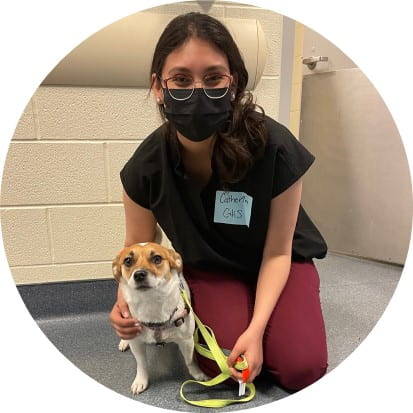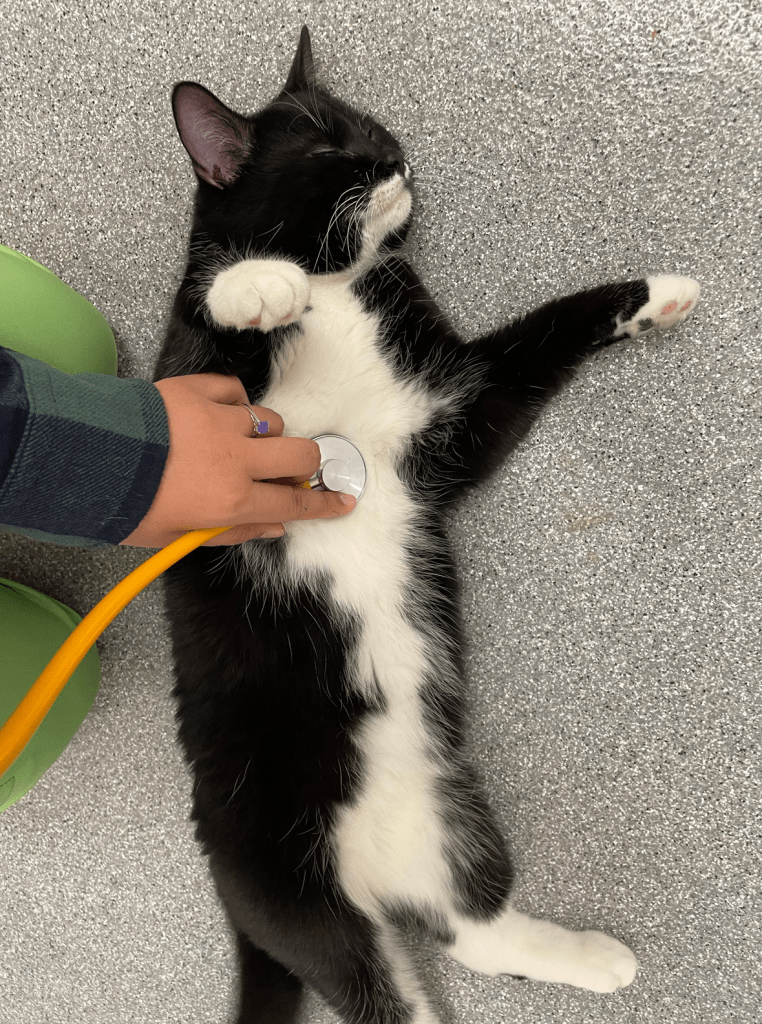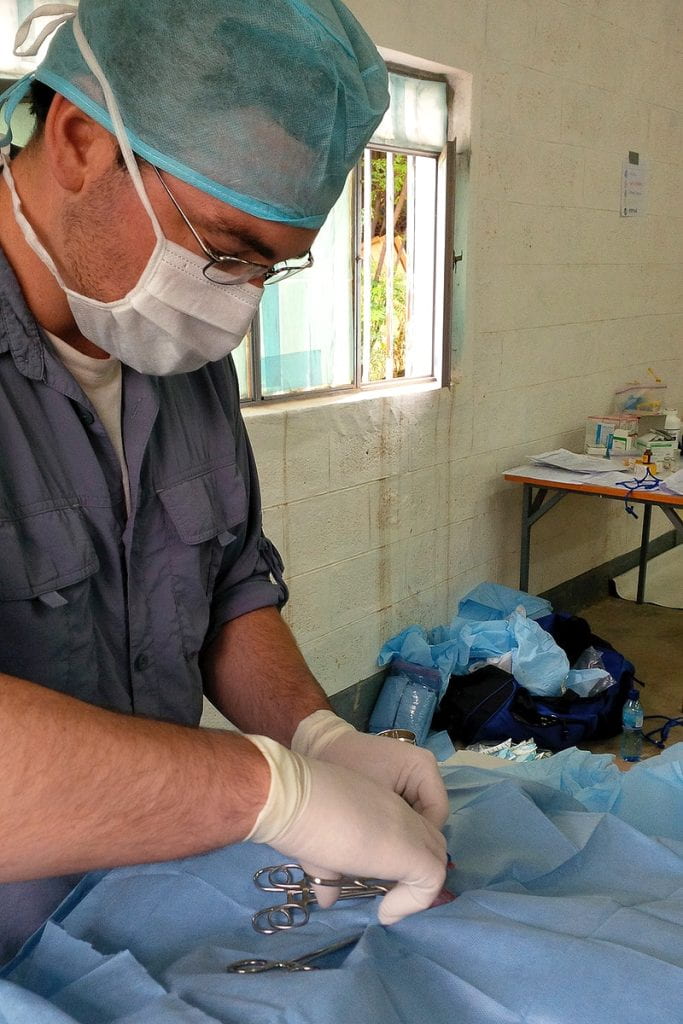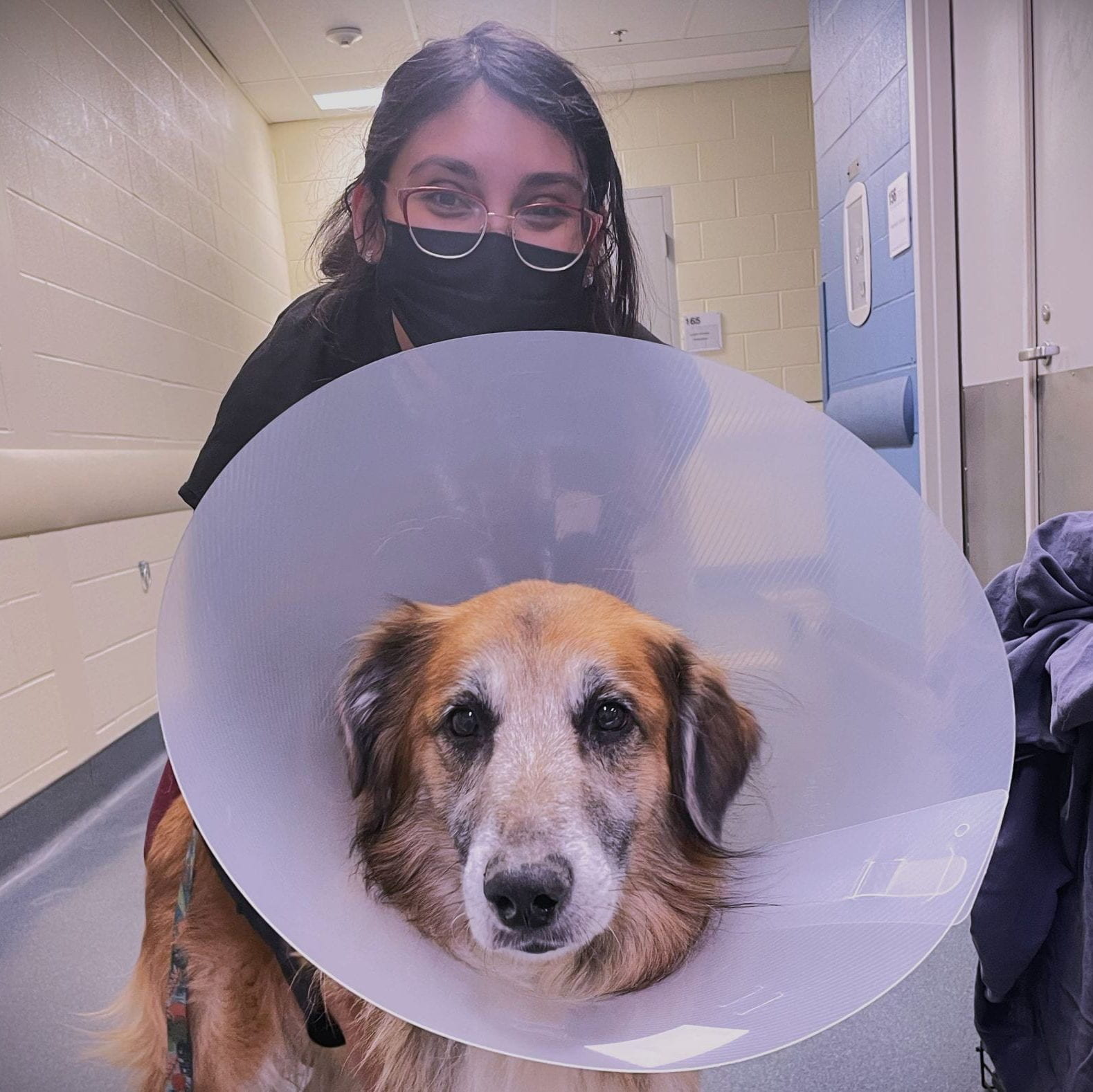
Accessing Veterinary Care for a pet is critical to the pet’s well-being.
Access is affected by the manner in which veterinarians communicate to pet owners about the value and features of care options.
The RCVM@OVC team is committed to improving outcomes for pets by building our collective understanding of this key aspect of the veterinarian-client relationship.
v
Scope and cost of care options can feel overwhelming for clients
Modern veterinarian medicine offers a vast scope of care options for clients’ consideration — a breadth that is advantageous on the one hand, but potentially overwhelming for clients on the other hand. Effective communication with clients about the diversity of care options available for their pets must reflect this breadth and scope. Equally important is the manner in which this information is communicated by veterinarians — a factor which impacts client choice, and, in turn, the pet’s access to care options.
Cost conversations are an important, yet uncommon, aspect of veterinary care
The RCVM@OVC team has explored the prevalence and nature of conversations between veterinarians and clients about the cost of various treatments, and gained insight regarding how veterinary professionals engage in communication about cost. We have learned that cost conversations between veterinary professionals and clients are in need of support in order to become more common. The RCVM@OVC research program is taking steps to raise awareness about the importance of these conversations becoming more common, and to support education that will encourage veterinary professionals to have these difficult discussions.

Discussing cost allows veterinary professionals to be aware of the client’s financial limitations and their perspective on the cost of the various treatment options. Furthermore, these conversations provide veterinary professionals with the opportunity to communicate the relative value of the recommended treatment options — a process which is most effective when communicated in a way that is meaningful to the client, and that engages the client in the decision-making process. This relationship-centred approach increases the accessibility of care by breaking down knowledge barriers, and supports the pet owner and veterinary professionals as they work together to make the best and most practical choices for the patient.

The veterinary field needs a better understanding of veterinarians’ approach to communicating the value of care options

Moving forward, the RCVM@OVC team is preparing to further explore how the options for care are presented to clients, particularly the communication of their value.
Our research will explore how client choice is affected by the manner in which treatment options are presented by veterinary teams, including details pertaining to the dollar value of various care options and the benefits of each option to the patient. We anticipate that clients’ preferred choice will often differ from their actual choice. If our expectation turns out to be supported by the data, an important next step will be to determine why these differences exist, and what we can do to bolster veterinarians’ communication regarding the range of options for clients to choose from in relation to their pets’ veterinary care.

Interested in learning more about Accessing Veterinary Care?
To read selected publications on Accessing Veterinary Care by Dr. Coe and other members of the RCVM@OVC team, please visit our Publications page, as well as our Resources page.
“A relationship-centred approach is the gateway to providing accessible care. With client involvement and veterinary team know-how, the patient gets the best life-long care from available options in the veterinary field.”
Catherine Groves, MSc, PhD Candidate



